DeWalt, Bosch, or Metabo? Which of their new entry-level table saws is the best?
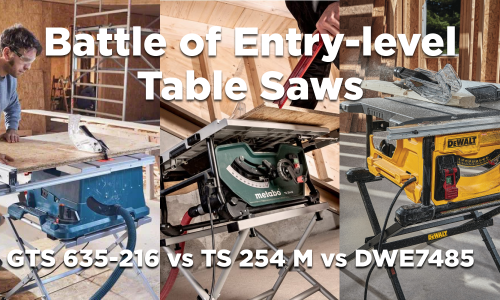
Over the last year, all three big manufacturers (DeWalt, Bosch, and Metabo) have introduced new lighter and cheaper versions of their flagship table saws.
These new saws seem to be doing very well in the market – they fill the gap between really cheap Ryobis and the like and the more expensive models. They all offer reasonable accuracy and decent build quality at a great price.
It’s good to see some progress in the table saw market, so that even with a limited budget you can get a good table saw.
But which one of these new saws is the best? And what makes them different?
In this article I’ll compare the Bosch GTS 635-216, Metabo TS 254 M, and DeWalt DWE7485, so you can make an informed decision about which saw is best for you.
Tip: At the end of the article you can find comparison tables so you can compare the specs of all three machines side by side.
Let’s talk about price first. The TS 254 M and 635-216 are direct competitors with both costing about €325 currently. This means they can be compared purely on quality.
The DWE7485 on the other hand is just under €500 (but cheaper in the US), quite a step up from the other two saws. This means it will have to have some serious improvements over the other two saws to be good value for money.
To find out exactly how they all differ in a meaningful way, I’ll compare them along three categories: Accuracy, size and power, and build quality.
The accuracy of a table saw depends on three main factors: the fence, miter gauge, and the general flatness/dimensions of the body. If the fence isn’t straight, or moves out of parallel with the saw blade, you’ll never make accurate rip cuts.
Likewise, if the miter gauge has some play (meaning it can move laterally in the miter slot), you can never rely on crosscuts being exactly 90 degrees. And if the table isn’t flat, or the body is deformed in some other way, it will be difficult to make repetitive accurate cuts as well.
The good news is that all three fences clamp both front and back. This was not always the case for entry-level table saws. The bad news is that they are not all implemented equally well.
The DWE7485’s fence is the best by far. It uses a rack and pinion system, which makes sure the fence always moves exactly the same amount front and back. This means the fence can’t go out of parallel with the blade. Additionally, the fence can also be adjusted with a fine adjustment knob.
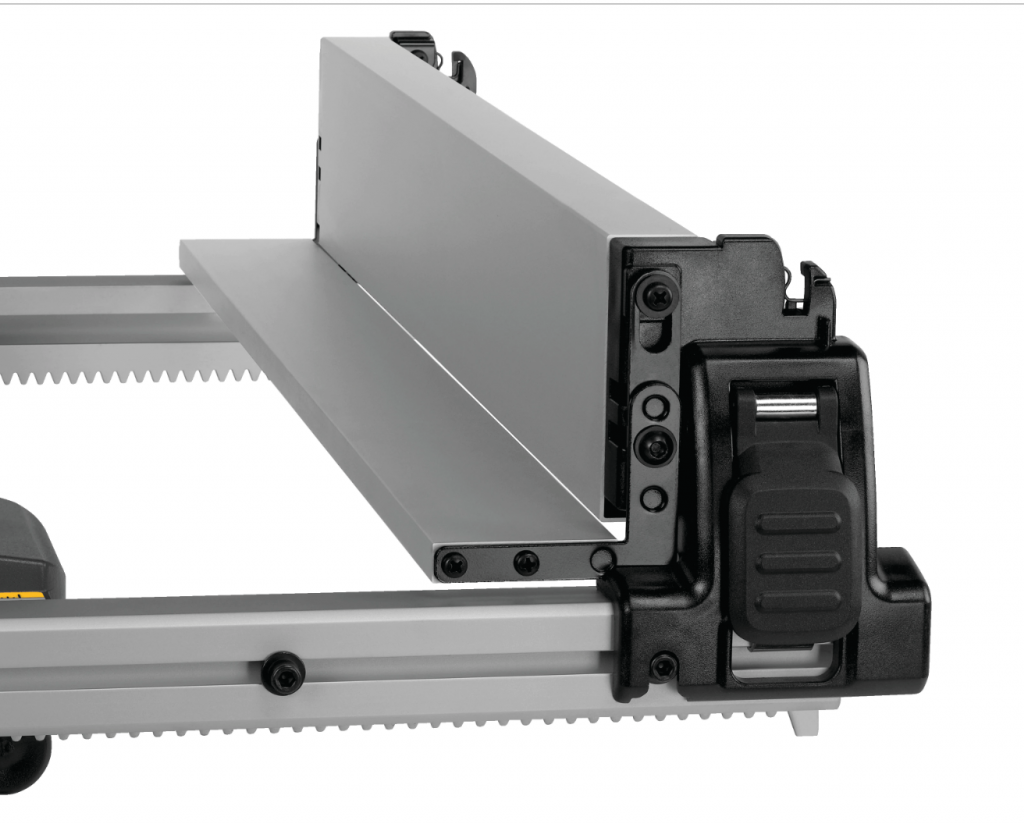
DeWalt has had this system on all their saws for some time now, and it’s the main reason why their saws are so accurate.
The GTS 635-216 doesn’t have such a system, it simply has a clamp that secures the fence back and front when you lock a lever. But there is no guarantee that it will be parallel to the blade, so you’ll always have to measure for squareness manually. Another problem is that the clamp in the back doesn’t fall in the designed slot as it does on the bigger GTS 10 XC. Luckily, there is a 3D-printed solution you can make to fix this.
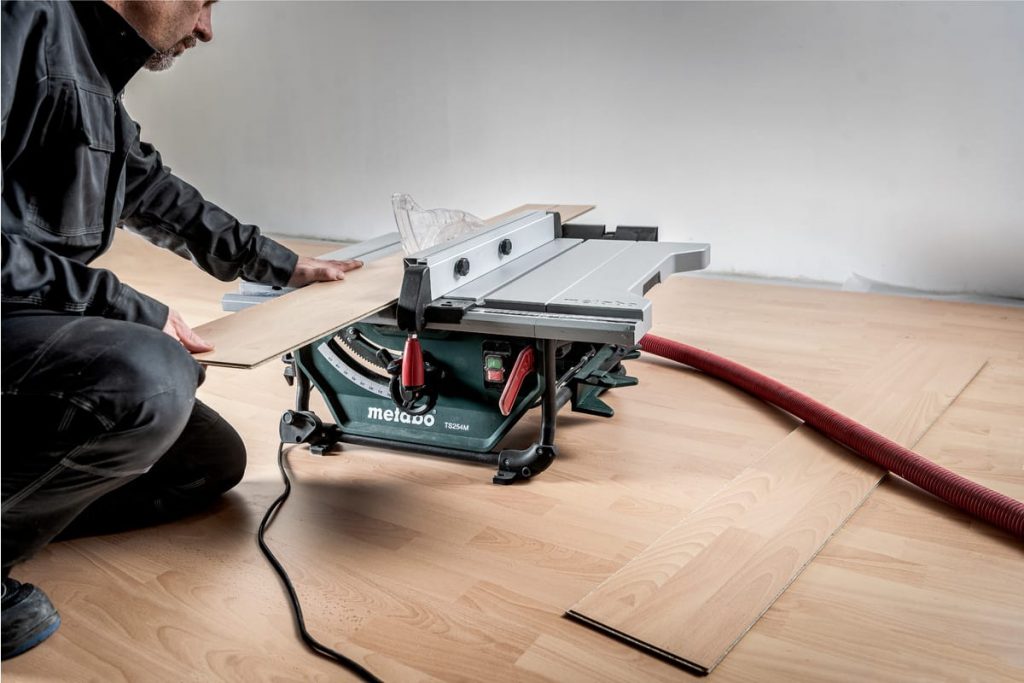
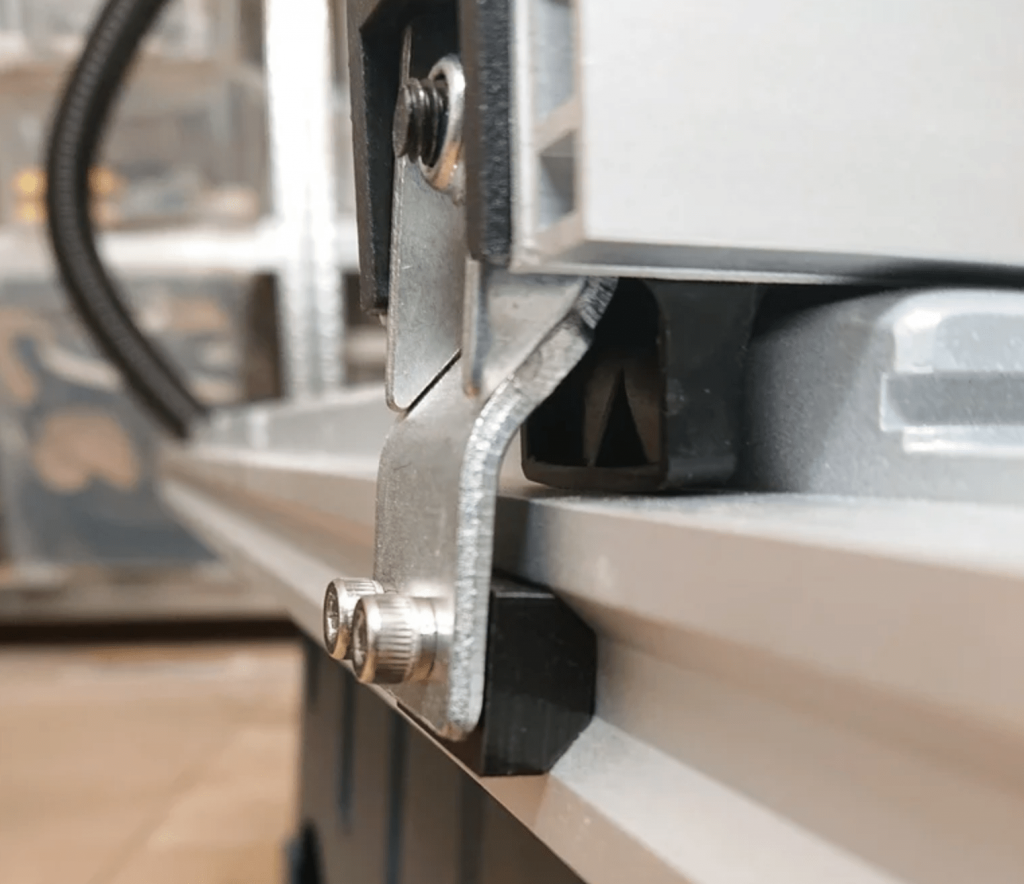
The TS 254 M’s fence works pretty much the same as the Bosch’s, except that the fence does have a working mechanism which ‘pulls’ the fence parallel when you lock it. You can’t adjust it finely as on the DWE7485, but at least you will be parallel with the blade.
Conclusion: All in all, the DWE7485 has by far the best fence system that will always be accurate and can be adjusted finely. The Metabo has a good fence as well, while the Bosch’s fence has some limitations out of the box. Maybe future versions will get a fix for this.
The miter gauges on these three saws are similar. They are all quite basic, and have no stops that can be set to ‘remember’ specific angles. This means every time you change the angle, you’ll need to re-measure to make sure it is accurate.
While the GTS 635-216‘s miter gauge is made of plastic, the DWE7485 supplies a metal miter gauge, which feels like it will last for longer. The DeWalt’s miter gauge also has some holes to which you can add your own wooden or metal bar to make it bigger and more stable. The 635-216’s gauge does not have this.
The TS 254 M actually comes with such a support bar included, made of the same material as the table top. It is sloped so you can use it for angled cuts as well. Another thing it has over the other two saws is that it can be adjusted for play. There are two screws or bolts that you can turn to make it slightly wider or narrower. This makes it fit exactly in the miter slot, eliminating any sideways movement.
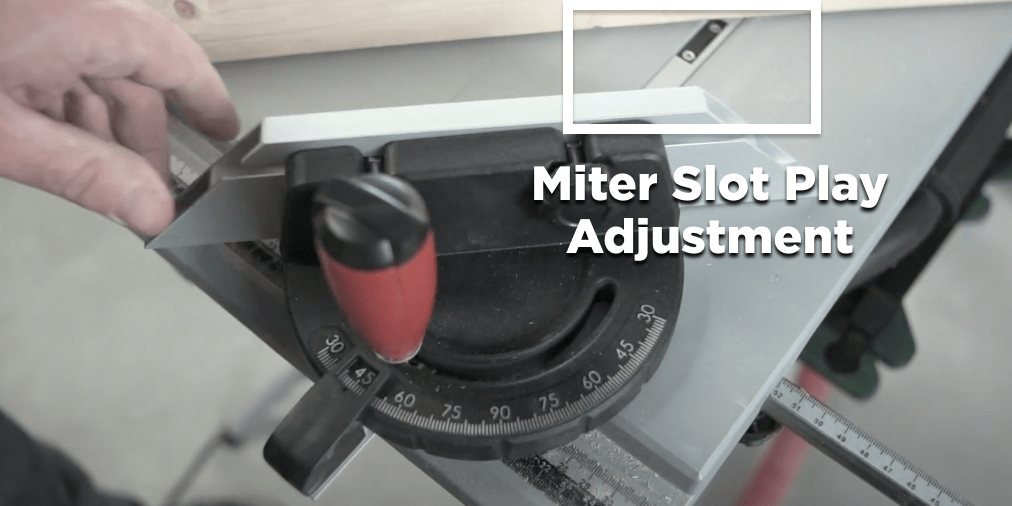
On the DeWalt and Bosch you need to get lucky with the castings, and you may have some problems with play, which results in crosscuts being less accurate.
Bonus: Another bonus for the Metabo is that you can even upgrade it with a sliding table, making the miter gauge even better. The sliding table is really accurate, and comes with a larger support bar to make it easier to cut large pieces.
The sliding table does cost about €100, but even then the TS 254 M comes in cheaper than the DWE7485.
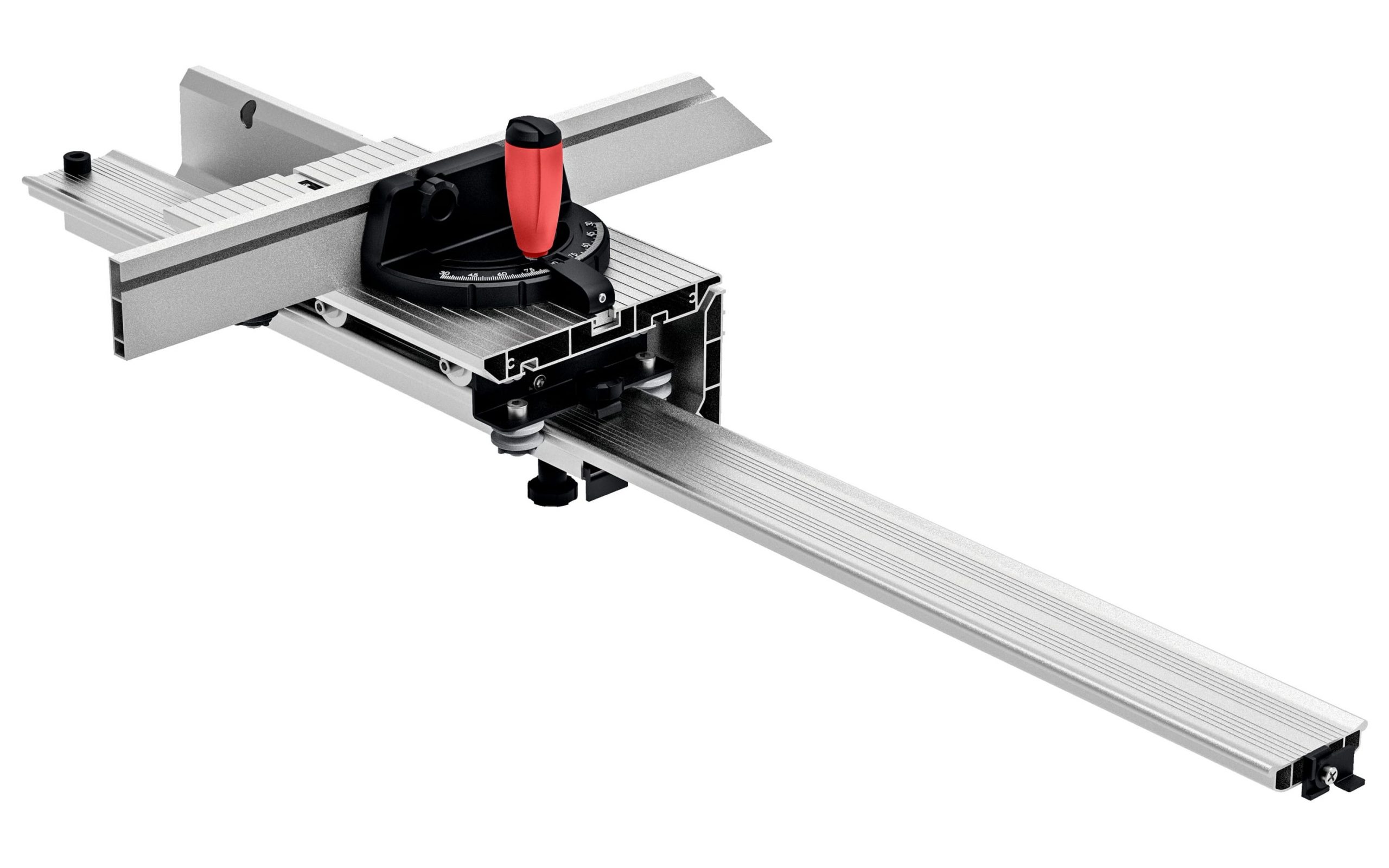
Conclusion: All in all, the TS 254 M’s miter gauge is clearly the best, thanks to its metal support bar and ability to adjust to eliminate play in the miter slot.
All three saws are about equally powerful and in practice you won’t notice any significant difference between them. They’re all powerful enough to handle most tasks a home woodworker can throw at them, from thick plywood to hardwood stock.
Where they do differ is in terms of blade size and rip capacity.
The 635-216 and DWE7485 both have small blades (216 and 210mm), but the TS 254 M has the same large 254mm blade as the bigger flagship models. This means it can handle stock up to 80mm thick, while the other two saws are limited to a thickness of 70 and 65mm respectively. This is a clear advantage for the Metabo.
However, when it comes to rip capacity, the opposite is true. The Metabo is limited to 520mm wide rip cuts, while the DeWalt can do up to 622mm, and the Bosch even handles up to 635mm wide cuts.
This means the Bosch and DeWalt are capable of cutting standard sized plywood sheets in half, which is not possible on the Metabo.
Conclusion: Overall, the Metabo has an advantage in dealing with solid wood, thanks to the larger saw blade. The DeWalt and Bosch on the other hand are slightly better if you plan on cutting large sheet goods.
Build quality is always hard to judge from the outside, and can really only be proven after using a machine for a few years. Given that all three saws are quite new, we’ll have to wait some time to see what actual users report when using the machines for some time.
That being said, the Bosch does seem to be the most plastic-y of the three. But it also has more body, while the other two have more of an open body design.
The DeWalt does have a much higher quality fence system that won’t break as easily. I can imagine the fence locking mechanism on the Metabo and Bosch becoming fatigued and a bit loose over time.
Given the DeWalt’s premium price, you’d expect it to have a better internal build quality too, but it’s hard to tell if that is really the case.
Conclusion: All in all, the DeWalt has a slight edge in build quality, but the other two saws aren’t too far behind.
So which of these three entry-level saws is the best? And which is the best value for money?
The best saw of the three is undoubtedly the DeWalt DWE7485, thanks to its superior fence system and build quality. But it is also €150-200 more expensive, so then the question is whether it is worth the money.
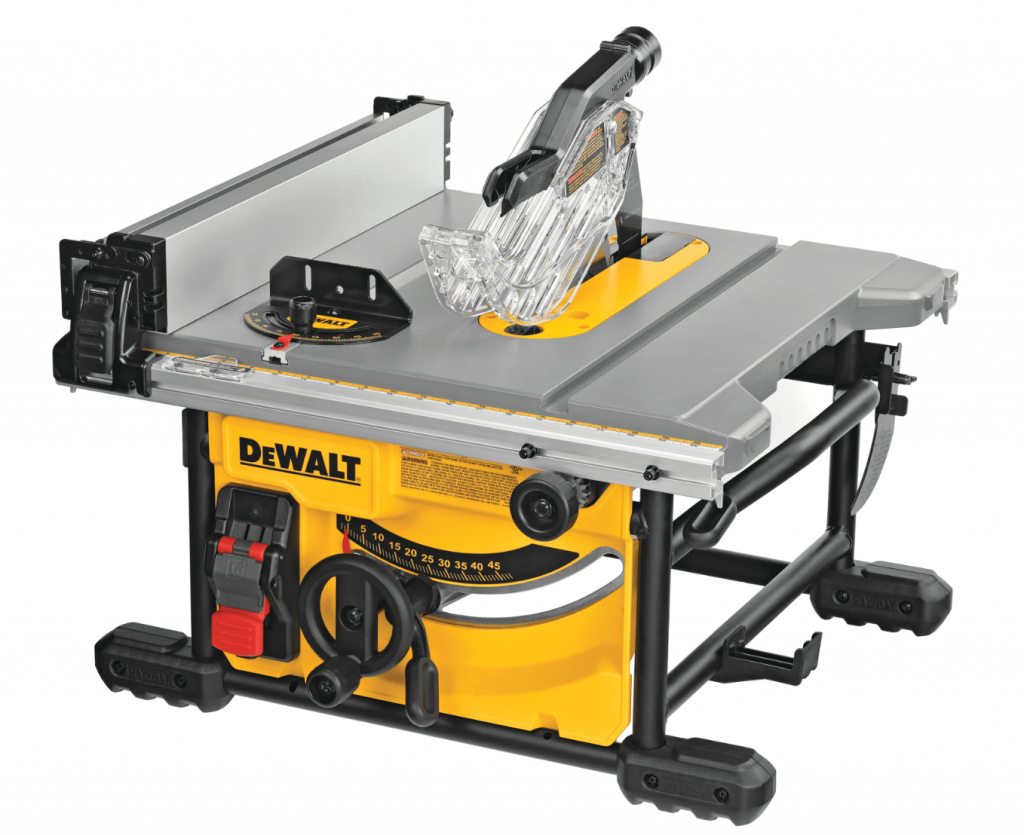
| Store | Price | |
|---|---|---|
 | Price Hidden |
| Store | Price | |
|---|---|---|
 | £699 |
| Store | Price | |
|---|---|---|
 | 0.01 € | |
 | 517.05 € | |
 | 779.45 € |
The Metabo TS 254 M and Bosch GTS 635-216 are very comparable machines, with the Metabo having a slight edge thanks to its better miter gauge and fence. Given that they are the same price, I would recommend going with the TS 254 M. Only if you absolutely need the large rip capacity of the Bosch should you go with that one.
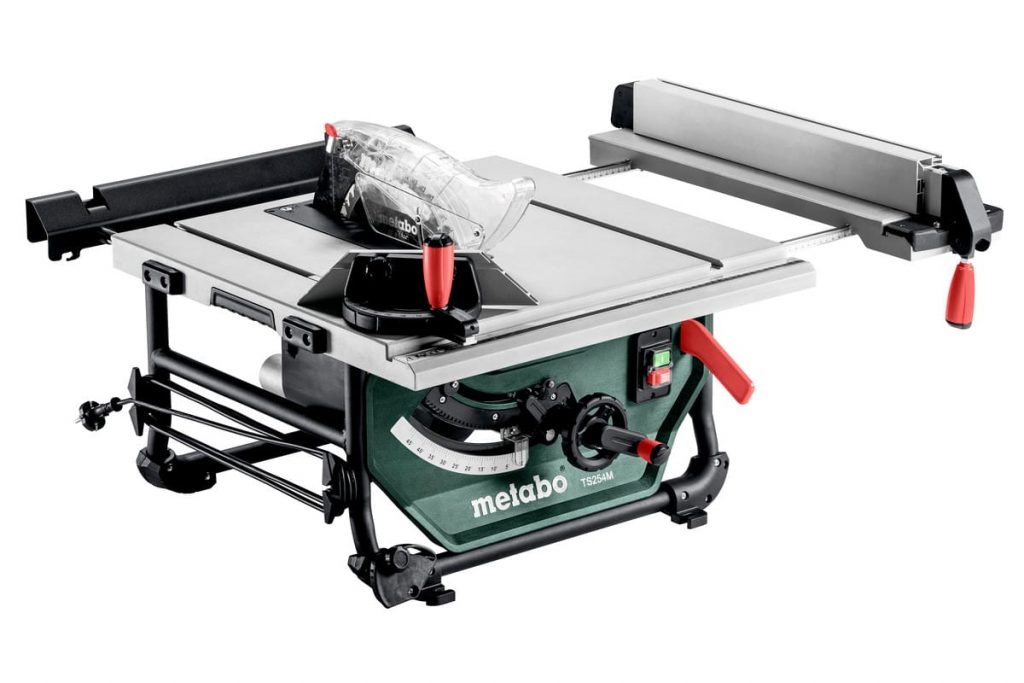
I’ve actually written a detailed review of the TS 254 M, which you can read here.
Conclusion: Whether you should pick the TS 254 M or the DWE7485 is a question largely of budget. The fence is certainly better on the DeWalt, but if you don’t really mind occasionally checking the accuracy of the fence yourself, then the Metabo can give you a lot more value for money.
Do you have personal experience with any of these saws? Let us know in the comments below how you liked them, and if you agree with our analysis.
© Machine Atlas 2026
Very informative and helpful. Actually, I’d narrowed my options down to these three and possibly the Hitachi. I reside in S. Africa, so options are a little limited. For me the fence is crucial. Sort of knocks out the Bosch.
Thanks for your views.
Hi Ralph, Glad you found it helpful. If the fence is crucial for you, I’d definitely go for the DeWalt. The Metabo’s fence is slightly better than the Bosch, but also not perfect.
Hello! Would you compare the Makita MLT 100 to the Metabo TS 254 M? Thank you!
Thanks very much Rob, for a very practical and thorough review of these machines! This has helped me to make a final decision on the best choice in my situation, The Metabo 254 M. Did you have a chance to use the optional sliding table too? I am in doubt whether this is a good investment in my situation.
Hi Johan, glad you found it useful. I haven’t tried the sliding table yet. It’s been out of stock for many months now. But I’m also doubting whether I really need it, as I have a good table saw sled now that does most of what I want. I’m also working on an MFT table for cutting sheet goods, so the sliding table wouldn’t add much anymore.
But I still think it’s a good product based on the videos I’ve seen. It really depends on your use case how useful it will be.
Rob
Hi Rob, great article and video’s thx.
I’m looking for a little advice on a Metabo TS254M V Dewalt DWE7491. I don’t do a lot of woodwork and when I do it varies from carpentry through to building so it’s pretty varied. My workshop is small and has many metal working machines so everything is on wheels so I can re-arrange for projects (the 2ton milling machine is a little hard to move). Hence I won’t have the saw setup all the time, when I go to use it will be put into my metal fabrication table’s slide out extension so it be part of a bigger bench. I like the look of the Metabo for it’s quality and 10″ blade and the slide extension and it’s weight (my old man’s sawbench has this and I kinda like it) but I’m concerned about the fence. The Dewalt on the other hand ticks all the boxes, fence looks great but is heavy (that’s good an bad) but I’m worried it might then be a barrier to unpack and use. If you parked budget what would you choose b/w the two?
Hi Cameron, I think both the Metabo and DeWalt are good saws and I don’t think you wouldn’t be unhappy with either. The DeWalt 7491 is a bigger saw, and more comparable to the regular TS 254 (not the M version), the equivalent DeWalt is the DWE7485, but that does have a smaller saw blade.
As to unpacking and packing, I think it’s still a bit of a hassle for both machines. I have the TS 254M on the removable stand, and I never unpack it because it’s already quite heavy and takes time to unscrew.
Dewalt has a rolling stand that is much easier to unpack and would probably be ideal for your situation. The bigger Metabo TS 254 also has a similar stand, but then built in.
Hope that helps!
Hello Rob, and thank you for an already great review.
I’m looking for a good precision table saw which can work as an allrounder, but mostly for fine furniture building, at least in terms of personal ambition.
However noise level is an issue in my current workspace, and so I’m trying to find the best option for this. So far Metabo, both TS254 and M seem the like the most quite going of your line up. I have ruled out Festool and Mafell/erika for reasons of price and availability (living in Norway, special import only).
Hi Anders, I’m not sure if there’s a huge difference between these three machines in terms of noise. I’ve only used the Metabo myself and the noise level is acceptable to me (with headphones). But still, table saws are always going to be quite noisy. The Festool and Mafell might be slightly less noisy due to better motors.
I have two other options you could consider: An Inca Major, which is more precise/accurate than current table saws of that size, but it misses some features, like soft start etc. One additional advantage is that you could change the motor to a quieter one if you can find it, as the motor is separate from the rest of the saw.
And you could also consider getting a used, older model of the Festool saws, or one of the older Metabo Magnum series. But that would depend on the price and availability in Norway. If you get a good deal, you could get a very accurate machine for a relatively low price.
Good luck with your search!
Rob